How to paint a door and refresh your home instantly
Painting doors is easy with our expert advice. This is how to get professional results on front and internal doors.

Laura Crombie
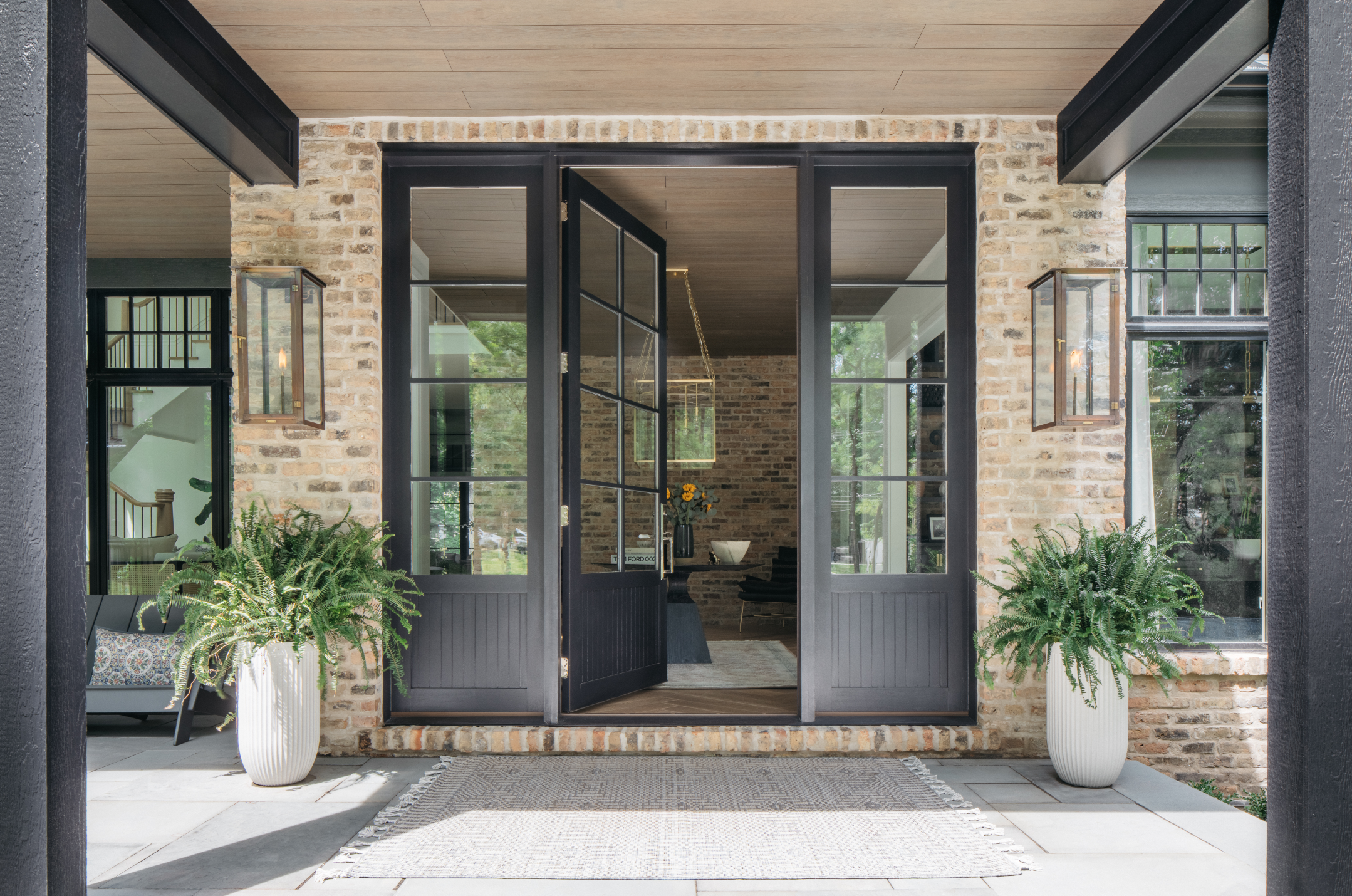
Painting a door may seem daunting when actually it can be easily done and it's one of the quickest ways to give your home a fresh new look.
Learn this skill and you'll be able to copy the latest front door ideas in no time. All you need is the right paint for the job, as well as a little time and space but otherwise, it's not an overly complicated DIY and you will save a ton of cash by doing it yourself.
There's no better way to inject color and vibrancy, not to mention curb appeal into your home than with this simple home improvement job. From correctly prepping and priming the door for painting, to drying time and different effects, you can guarantee a professional finish throughout your home with our guidance. Next you'll be painting the outside of your house too..

Before painting a front door
If you are painting a front door, the process is exactly the same as for an interior door, but you have the added complication of the weather and security to contend with.
If you have a new door to paint, leave the old one in position until the new one is ready to hang. This may mean removing the old door temporarily while you size up and cut the new one.
If you are re-painting your existing front door, you could opt to remove it from the hinges but I would not recommend doing so. A safer and more manageable option for most DIYers is to use painter's tape to protect the hinges and hardware while you paint.
You will need

1. Dust sheets/newspaper or cardboard
2. Primer
3. Paint (make sure it is suitable for the type of door you are painting)
4. Small paint tray
5. Paint brushes for cutting in
6. Painter's tape
7. Sugar soap (or similar cleaning solution)
8. Sponge
9. Bucket of clean water
10. Small foam roller (optional)
11. Sander or sandpaper
12. Dust mask (if sanding)
13. Wood filler (if repairing any damage prior to painting)
1. Pick the right day
When painting a front door, try to work under cover if possible, but always choose a day with no forecast of rain, strong wind or any other adverse conditions that could affect your work.
Get small space home decor ideas, celeb inspiration, DIY tips and more, straight to your inbox!
Temperature is most relevant if you're using water-based paints, but try to pick a dry day again where the temperature isn't too hot but above 10°C/50F as this will help the paint dry properly, not too quickly, or not at all.
2. Pre-painting preparation
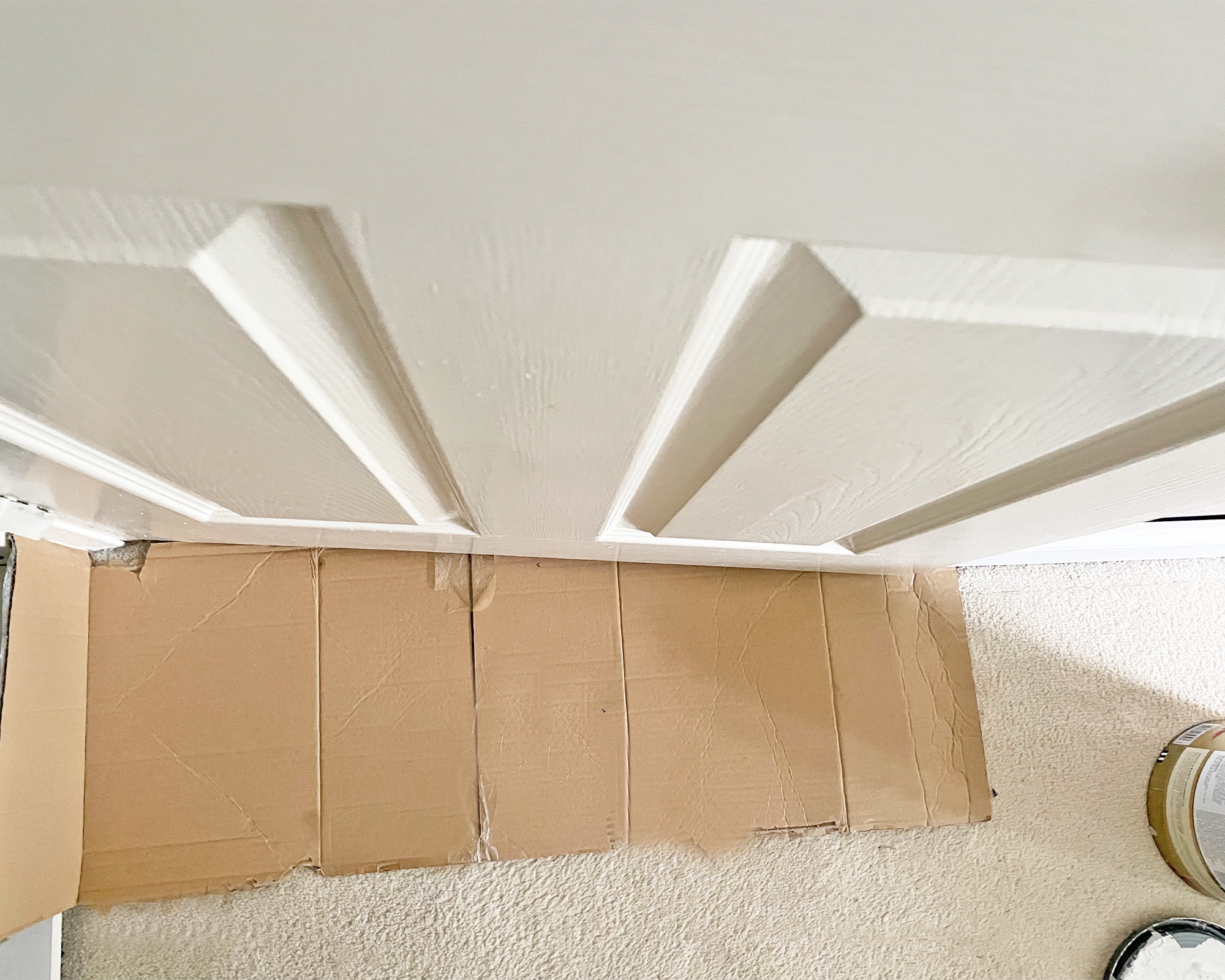
Cover the floor immediately in front of the door, for interior doors I often use old cardboard as it slides under the door easier than dust sheets and if you are only painting the door area, you don’t need to cover a huge space on the floor.
Examine the door for wear and tear and if you find any cracks or holes fill them with wood filler using a palette knife, allow to dry then sand until smooth.
Before you start painting an interior door, ventilate the room as much as you can even if that’s just by opening a window.
3. Key the surface

If the door has been painted previously and the paint isn’t peeling or flaking then you’ll only need to lightly sand it to get a key for the new paint to stick to. Wear a mask when sanding and ideally use an electric sander with a dust collector. Use a high grit sandpaper (eg 180 or above) so as not to over-sand and mark the wood. The idea is not to remove all the old paint (unless it is peeling and flaking) but rather to give the surface a slight texture.

4. Clean the door

Once you have lightly sanded the door, brush all the dust off. Top tip… don’t forget to dust the very top of the door where dust often collects, as you don’t want this mixing with the paint when you do the top of the door. After dusting, spray sugar soap over the door and rub it with a sponge to ensure all dirt, grease, and remaining dust is removed. You want a really clean surface to help the paint adhere. Wipe the door with a clean, damp cloth to remove sugar soap residue, and repeat until the door is really clean. Allow time for the door to fully dry then cover the hinges and door hardware with painter's tape.

5. Paint the door

Check your paint to see if an undercoat is required. Some wood paints contain a primer and some don’t, so be sure you know which yours is. The application process is the same for both the undercoat and the top coat, make sure you allow sufficient drying time in between coats.

Top Tip: Keep your paintbrush quite dry and don’t overload it with paint to reduce the likelihood of visible brushstrokes, especially on any decorative moldings.

Paint the door edge first, sweep upwards when you get to the top of the door to prevent paint from collecting on the top of the door and then dripping down again. Wipe the front of the door if you have any drips.
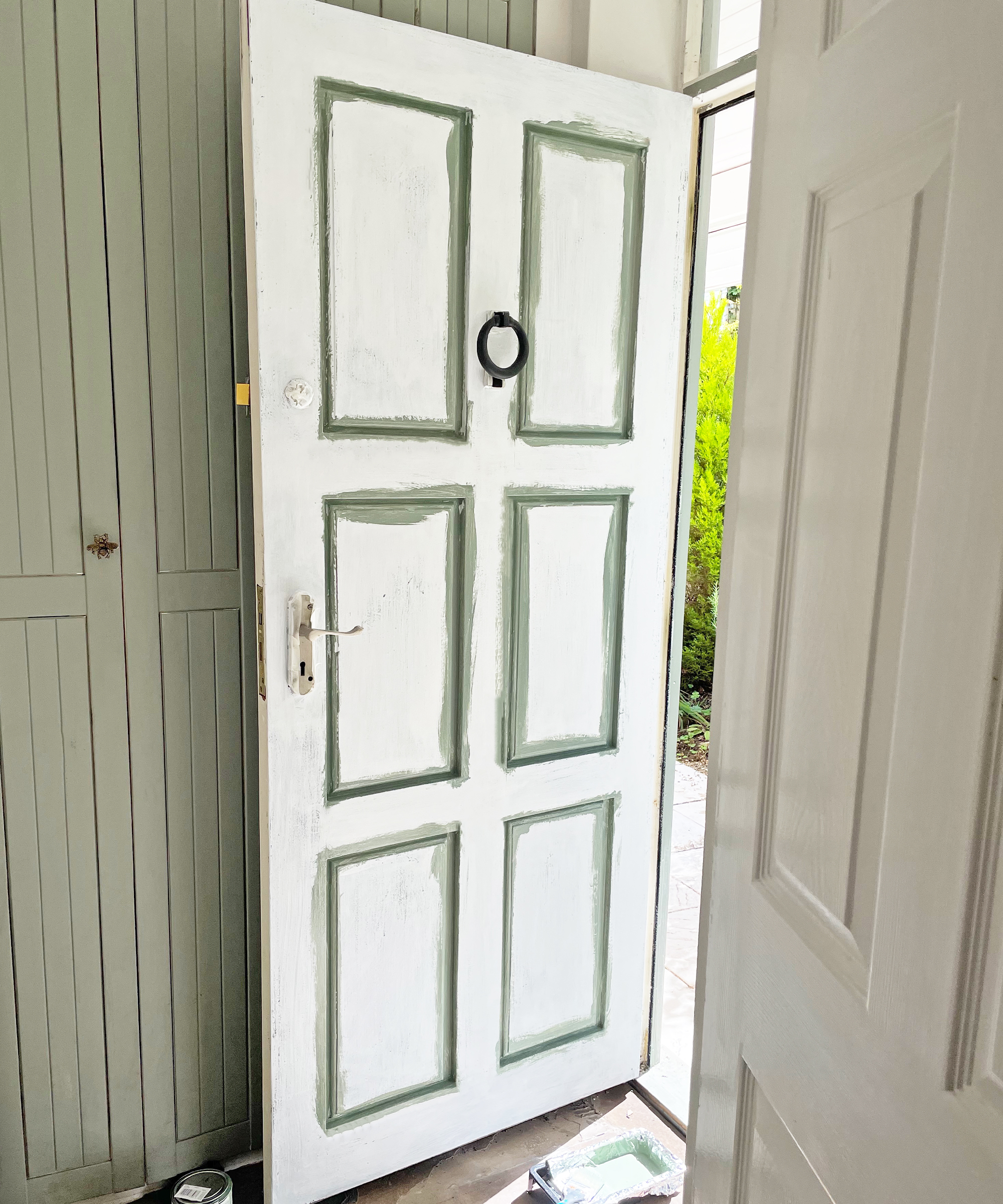
If you have a panel door like the one shown, paint the moldings and panels next followed by the surrounding parts of the door face.

Remove the painter's tape before the paint has dried to ensure smooth, neat lines.
You'll probably need to apply at least two coats of paint for optimal coverage. Lightly sand in between coats (once dried) if any imperfections appear like drips or runs.
Color Blocking your door
Color-blocking is a fun way to make a statement in your room and is easily reversed so doesn't require a huge amount of commitment. Use painter's tape to mask off the areas you don't want to paint.
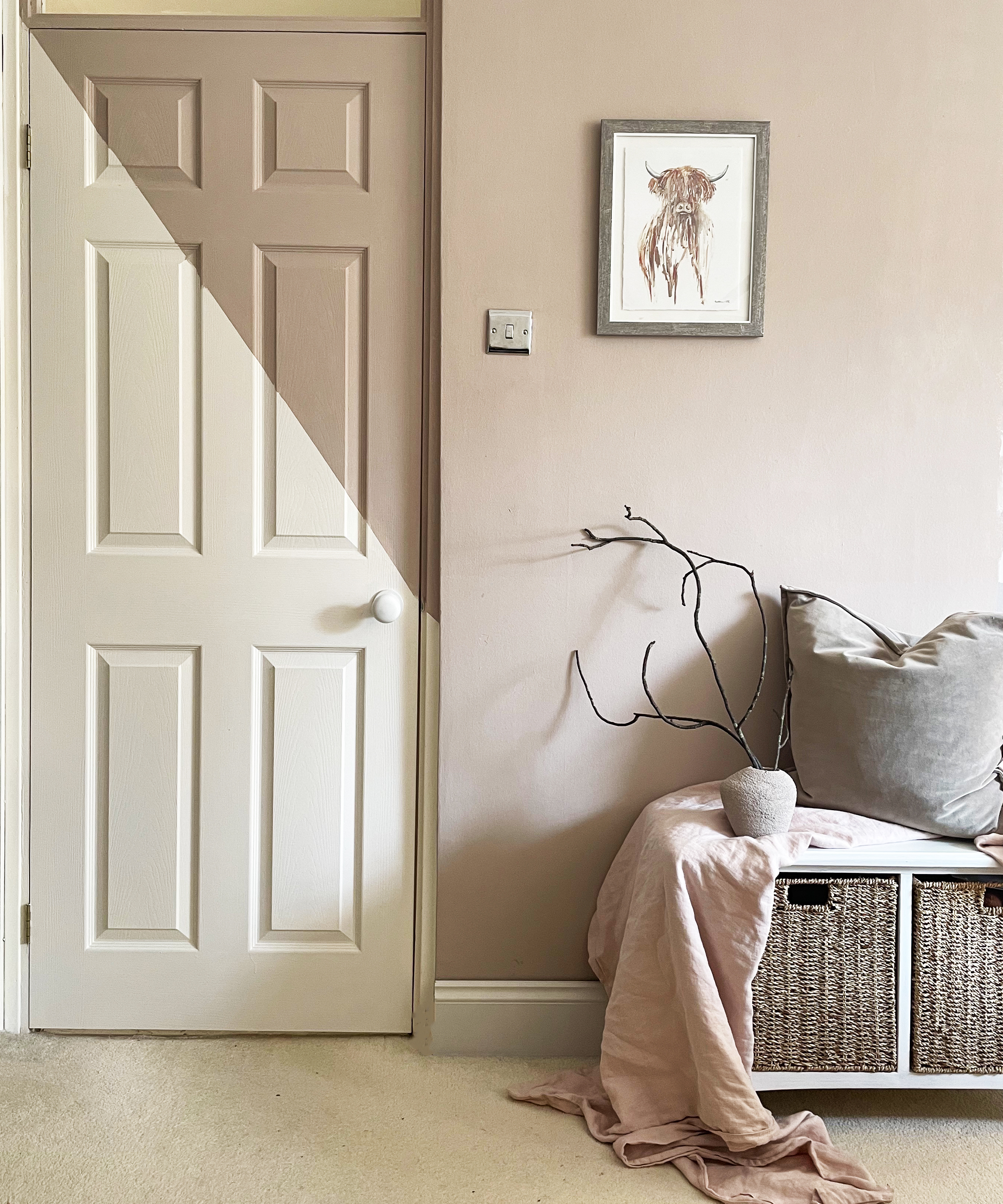
What kind of paint do you use on doors?
If you're painting a front door, as we do in the how-to video, you should choose an exterior paint like from Valspar’s Exterior Wood & Metal Trim range.
Generally speaking, all doors, see a lot of traffic, so you should choose a gloss or satin finish for durability as these are easier to clean. If your internal door is made from solid wood, pick up one of the best paints for wood.
Dominic Myland, CEO of Mylands says, "It’s best to choose a wood and metal paint for doors and window frames. These are specially formulated to be particularly durable and can also be applied to walls for a consistent finish. If you’re not too confident with color, we always recommend painting a smaller area first such as a single door or window frame in a bold color and leaving the rest of the room off-white — it’s really easy to live with but is a fun way to introduce color. You can increase your areas as your confidence grows".
Painting uPVC doors: If you're painting composite materials like fiberglass doors or upgrading a uPVC door, you'll find lots of specialist paints on the market for the job. Some are available without the need for primer — although we'd always recommend using a primer when painting around the house — and others are water-based which will always need priming. If your uPVC door is external, look for UV and weather protection also to prolong its life, much like if you were painting uPVC windows.
Painting composite doors: Although composite doors won't be 100 per cent plastic, you should still use the same method below and paint as you would for uPVC to protect their outer layer from flaking.
Painting untreated, interior, wooden doors: If you are painting an untreated timber door for the first time, you should apply a knotting solution to any knots and then prime with an undercoat & primer to create a key for the paint to adhere to.
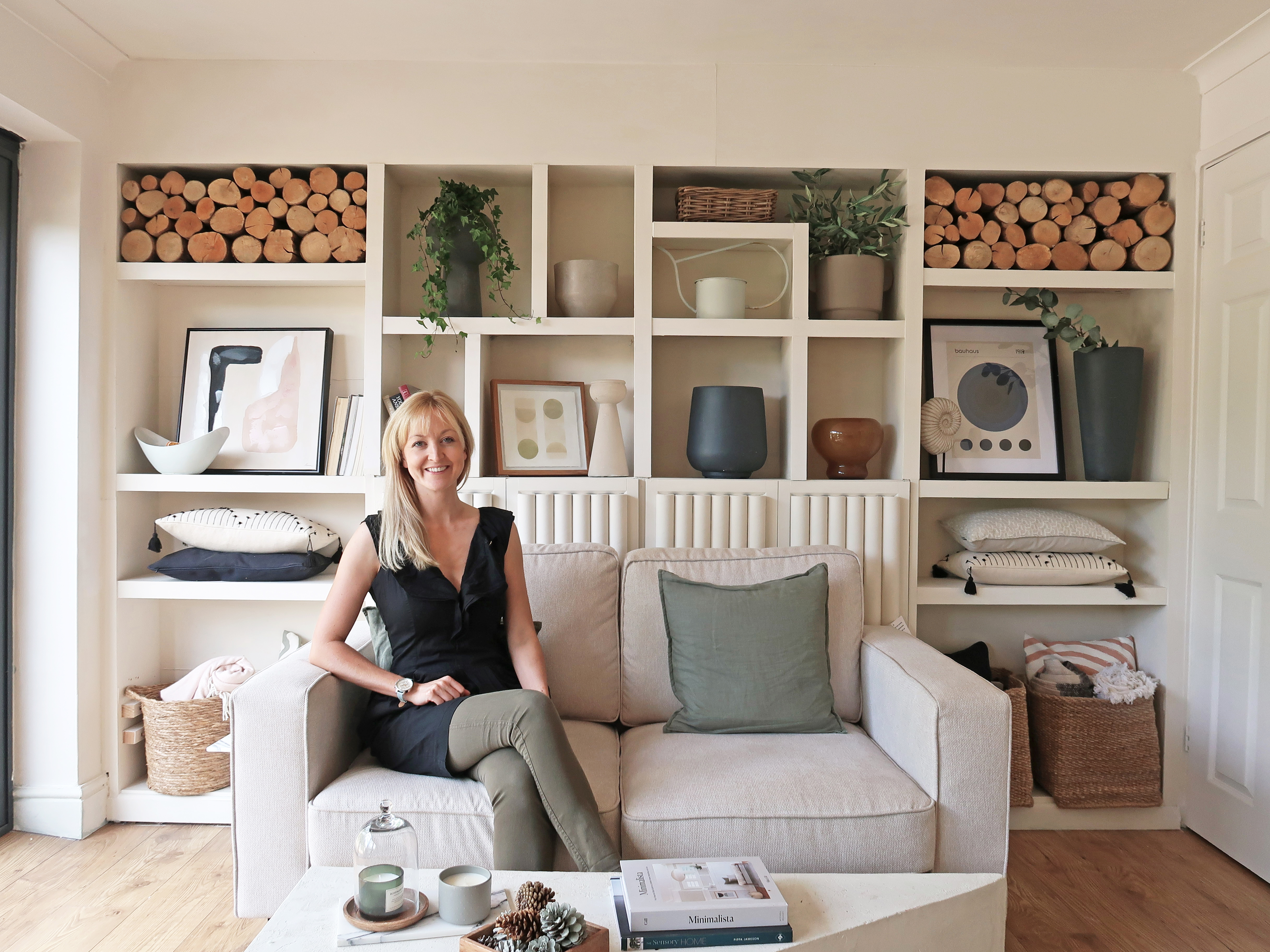
I'm happiest when I have either a drill or paintbrush in my hand! I specialise in room transformations on a budget and love experimenting with different styles and techniques which I share on my Instagram. I believe that your imagination, not your budget, should be the limiting factor when transforming a room and I love thinking of creative ways to build custom and bespoke-looking furniture using flatpacks or upcycle finds.
I also love writing and my home improvement blog (ClaireDouglasStyling.co.uk) is my passion project where I share creative ideas for interior styling and DIY tips and tutorials.